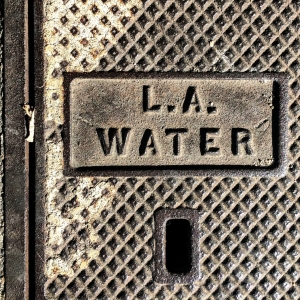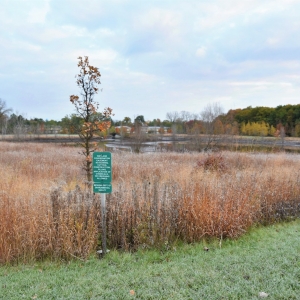The Stream, November 11, 2021: Thousands March Outside Conference Centers At COP26
YOUR GLOBAL RUNDOWN
- The chief executive at WaterAid says water isn’t getting enough attention from world leaders at COP26.
- Last week, youth activists from around the globe took part in a climate march outside conference centers in Glasgow.
- Life has been upended for villagers in the remote South Sudanese region of Panyaghor because of ongoing flooding.
- More U.S. cities consider wastewater recycling programs as water scarcity increases.
Industry waste has created a layer of toxic foam along stretches of the Yamuna river in India.
“Delhi is full of pollution but still people’s lives are going on. Like that, we will also do our prayers.” – Rajendra Mahto, a Hindu celebrating the festival of Chhath Puja. Industry discharge in New Delhi has produced a layer of toxic foam along stretches of the Yamuna river, the Associated Press reports. Despite the health risks, hundreds of Hindu devotees took to the river, offering prayers to mark the beginning of the festival of Chhath Puja, which is observed with holy bathing. The Yamuna river is one of the holiest rivers within the Hindu faith. It is also one of the most polluted rivers in the world due to sewage discharge, farm pesticides and industrial effluents.
IN RECENT WATER NEWS
Households Still Have Not Received Aid from New Federal Water Bill Assistance Program
Last December, spurred by household financial distress due to the pandemic, Congress authorized the first-ever federal program to help low-income residents pay overdue water bills. Lawmakers provided $638 million to set up the program and assist households with their water debt.
Four months later, in March 2021, federal lawmakers doubled down on the approach. They added $500 million to the pot, an addition that brought total funding to more than $1.1 billion for the Low-Income Household Water Assistance Program, or LIHWAP, as it came to be called.
Today, households are still waiting. No LIHWAP funding has been delivered to customers. The U.S. Department of Health and Human Services, which is in charge of the program, told Circle of Blue it has disbursed $855 million to states. But states are merely an intermediary. Once they have the funds, states then work with community agencies or individual utilities to identify eligible households and get them to apply for aid. Approved households will see a credit on their utility bill. That has not yet happened.
In Case You Missed It:
HotSpots H2O: World Spending on Climate Adaptation Must Increase Five- or Tenfold – While climate adaptation planning is more widespread than ever, the U.N. says the gap between current spending and needed funding is enormous, and widening.
What’s Up With Water – November 8, 2021 – This week’s episode covers a declaration from Colombian officials at COP26 and an Oregon city working to keep Google’s water consumption out of the public eye.
WaterAid Executive Calls for Greater Water Presence at COP26
WaterAid Chief Executive Tim Wainwright said water has not received enough attention at this year’s UN climate conference, according to The Guardian. Wainwright said that while it seemed world leaders were “taking note” of water at COP26 in Glasgow, the issue “needs a lot of action” urgently.
- Why it matters: Water has generally been ignored at past climate conferences. This year, experts are hoping to break the barrier between them and officials making decisions about responding to climate change.
TODAY’S TOP WATER STORIES, TOLD IN NUMBERS
25,000 PEOPLE
Around 25,000 people participated in a climate strike outside COP26 meeting halls last week, Inside Climate News reports. Among participants were several youth climate activists from around the globe, who took the opportunity to describe how climate change has affected their home countries. Many who came from low or lower-income countries said climate disasters like flood and drought have caused water scarcity and contamination. Some island nations may even find themselves completely underwater in the coming decades as sea levels continue to rise.
- In context: A Sinking Metropolis
3 YEARS
Floodwaters have risen to the brink of sandbag walls across swathes of the South Sudanese region of Panyaghor, new photo essay from National Geographic finds. Flooding has upended life throughout the region, displacing almost everyone in the region and cutting off vital aid donations of supplies from international humanitarian organizations.
ON THE RADAR
More U.S. cities are considering wastewater recycling programs as water supplies become scarcer. The Associated Press reports that although only around two dozen cities have recycled drinking water programs, that number is expected to double in the next 15 years.
Jane is a Communications Associate for Circle of Blue. She writes The Stream and has covered domestic and international water issues for Circle of Blue. She is a recent graduate of Grand Valley State University, where she studied Multimedia Journalism and Women, Gender and Sexuality Studies. During her time at Grand Valley, she was the host of the Community Service Learning Center podcast Be the Change. Currently based in Grand Rapids, Michigan, Jane enjoys listening to music, reading and spending time outdoors.







Leave a Reply
Want to join the discussion?Feel free to contribute!